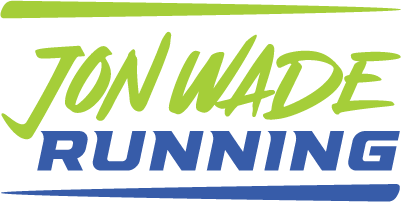You’re not built slow; you’ve just been training wrong.
Speed isn’t something you’re born with. It’s something you build. And if you’ve been putting in the miles but not seeing the results you want, it’s probably not your genetics holding you back. It’s your approach.
Here are four common reasons runners stay stuck at the same pace and what you can do to change it.
1️⃣ You’re Skipping Plyometrics
If your training plan doesn’t include explosive movements, you’re leaving speed on the table.
Why it matters:
Plyometrics like box jumps, bounds, and depth drops train your fast-twitch muscle fibers. These are the muscles responsible for quick, powerful movements that help you surge up hills, change gears mid-race, and finish strong.
How to fix it:
Add one or two short plyometric sessions each week. Start with:
- 3×10 box jumps
- 3×20 seconds of bounding
- 3×8 depth drops
Focus on good form and full recovery between sets. The goal is explosiveness, not exhaustion.
2️⃣ You’re Not Doing Real Speed Work
Strength training is great, but lifting alone won’t make you faster. You have to actually train fast.
Why it matters:
Running economy improves when you practice moving at or above race pace. Sprint drills and short intervals teach your body how to recruit the right muscles quickly and efficiently.
How to fix it:
Incorporate one weekly speed session such as:
- 8×200m sprints at 90–95% effort with full recovery
- 4×400m at 5K pace with equal jog recovery
- Hill sprints (8–10 seconds all-out) after an easy run
Form, cadence, and relaxation at high speeds are key.
3️⃣ You’re Wearing the Wrong Shoes
Old or unsupportive shoes don’t just feel sluggish; they steal energy.
Why it matters:
Every step you take relies on energy return from your shoe. Worn-out midsoles and poor fit lead to wasted effort and potential injury.
How to fix it:
- Replace your running shoes every 300–500 miles.
- Get fitted at a reputable running store.
- Match your shoes to your terrain and training purpose (daily trainers, tempo shoes, race shoes).
The right pair can instantly make your stride feel lighter and more efficient.
4️⃣ You’re Under-Fueling
You can’t build speed if you’re running on empty.
Why it matters:
Speed and strength depend on energy availability. Without enough carbs, your glycogen stores deplete early. Without protein, your muscles can’t repair and adapt. And without proper hydration, your neuromuscular system slows down.
How to fix it:
- Eat balanced meals with quality carbs, lean protein, and healthy fats.
- Replenish with a recovery snack (carb + protein) within 30 minutes after hard sessions.
- Stay hydrated throughout the day, not just during runs.
Small improvements in nutrition can lead to major improvements in performance.
The Bottom Line
You’re not “just a slow runner.” You might just be training like one.
Start adding explosive movements, real speed work, the right gear, and proper fueling to your routine, and you’ll be amazed at how quickly your pace, confidence, and enjoyment improve.
If you’re ready to take your training to the next level, let’s build a plan designed specifically for your goals.
Get a personalized training plan and coaching with Jon Wade Running

